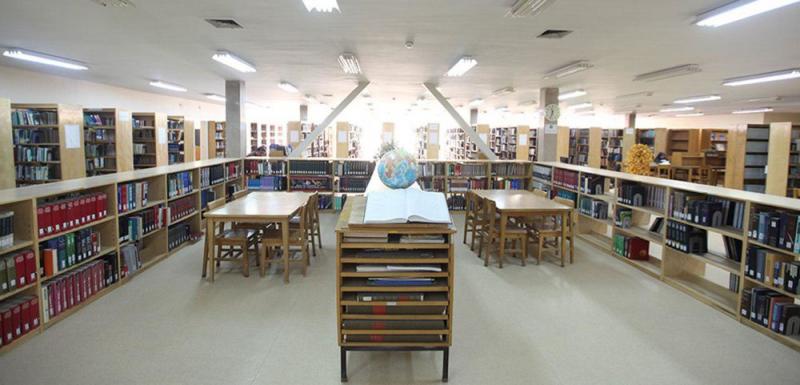
Located at the 150-hectare National Botanical Garden, the Library and Documentation Center for Natural Resources of Iran is the country’s most important reference library in the field of natural resources.
The library was founded in 1968 along with the establishment of the Research Institute of Forests and Rangelands (RIFR).
Around five years ago, the library moved to the present 600-square-meter location.
The new design of the two-story library provides ample space for the library collection for the next 50 years.
The library’s 23,150-plus volume collection is particularly strong in natural resources, with some publications dating back to the 19th century addressing plant culture, horticulture, deserts, medicinal plants, forestry and botany.
Kept on the ground floor of the library, some of the references cannot be found elsewhere in the country as they offer a unique, one of a kind selection.
The library also houses books featuring information about other subjects such as natural sciences, mathematics, physics, chemistry, geology, medicine, biology, animal sciences and zoology.
The collection comes in the form of English and non-English references, Atlases, maps, research projects, scientific reports, dissertations, journals dating back to the late 19th century, CDs, books, and e-books.
Since the library is on the outskirts of the capital, it mainly attracts students who pursue a degree in environmental engineering; although the collection also serves members, professional horticulturists, researchers, and the public as well.
A staircase in the middle of the library leads visitors to the lower story where all the non-circulating collection that is English and non-English references are shelved.
Snake plants, otherwise known as mother-in-law’s tongues or viper's bowstring hemp, along with some various sized pine cones, picked straight from the garden, are laid on the staircase with stainless steel handrails, decorating the library while creating a nature-friendly environment inside.
The natural landscape of the garden offers a beautiful view from the library while providing a lovely, tranquil environment for visitors and students to sit at tables and enjoy hours of study.
The library has exclusively 300 members who are entirely from the botanical garden and RIFA staff.
Maryam Masoom Tamimi, a 30-year-old librarian with 7 years of experience under her belt in that particular library, said the library has only a limited number of members and does not intend to add more to the list. However, she added, “we will continue to serve the public.”
Describing her work experience at the library, Masoom Tamimi said, “The library’s quiet atmosphere gives me peace. I love books and reading and that has always been the case since my childhood and therefore working in the library seems to be the perfect job for me.”
One of the students making frequent visits to the library is Sabora Rahanjam, 28.
Majoring in forest ecology, Rahanjam brings her joint-project to the library to work on every day.
“I analyze the data on Loveh Forests using full caliper method on living standard trees and dead wood and later interpret the findings with my professor. The findings then will go in the seasonal journal titled Iranian Journal of Forests and Popular Research.”
Rahanjam loves the well-organized library and calls it “lovely, light and airy with beautiful decoration.”
One of the old timers of the RIFR is Dr. Mostafa Assadi, a researcher who has been with the institute ever since 1974.
Also a member on the scientific board of the institute and a pioneer in the field of herbarium development, Assadi, 67, has been working to develop the Central Herbarium of Iran.
The institute’s herbarium specimens get exchanged with the herbarium specimens of neighboring countries.
He is also the editor and contributor of a collection of books called Flora of Iran that introduces various plants of Iran and was launched in 1988.
So far, 85 editions of the books have hit the market with another 59 editions ready to go while the goal is to have about 160 editions.
Flora of Iran and Iranian Journal of Botany as the publications of the RIFR gets exchanged with the publications of similar institutions of the world, i. e. Russia, England, Switzerland, Scotland, Germany and others.
Assadi calls the library “an inseparable part of his research” where he goes in often for his work.
The library, situated on the busy Tehran-Karaj Highway in Azadshahr, about 15 km from Tehran, is open to the public 7:30-15:30 on weekdays and closed on weekends, i.e. Thursdays and Fridays and national holidays.

Add new comment